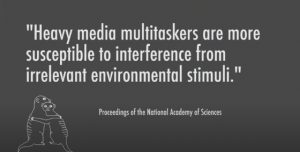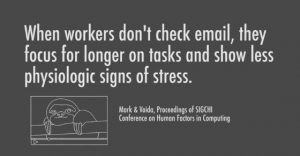A Technology’s Purpose?
This topic took me to the first group presentation of this class, and even a class early in the semester where a series of innovations found their way into society and schools, striking fear into education traditionalists – things that all became common tools for teachers to use. The internet has been no different. With change comes a fear of the unknown, and there is plenty of unknown regarding the internet, from content to how to use it safely, to maximizing the resource for educational purposes. I will assume that the printing press, radio, and television all faced these same hesitancies.
Cloud-based tools have provided a way around installed software, opening a door for collaborative planning, teaching, learning and creation of various forms of artifacts. Sietz and Sinkinson (2014) highlighted the following pros of online presentation tools:
- Does not have to be downloaded
- Easy collaboration
- Flexible delivery
- Encourage creativity
- Potentially more active, engaged, and experiential learning space
- Lower costs
- Present in interconnected rather than linear ways
- Communicate in modes other than text
- Easily shareable
- Compatible with all devices, including mobile phones and tablets
Google Classroom (GC), which I have used for about five years, has definitely changed the game from my point of view. In fact, I continue to find different ways to use or organize it every year, kind of like reflecting on individual lessons. Svenson, Pendrill, and Pelger (2020) reported that with time, practice, experience, and support, teachers will likely expand their use of GC. It has taken me a while to complete the move from the Microsoft suite, and I still find Excel to be easier to use in certain cases, and I do not use cloud storage in my personal life.
The internet gives classrooms the chance to connect with students or classes from anywhere in the world, opening the door to learning opportunities vastly different from the penpals I experienced. I think of teachers who I have had class with in the pursuit of my masters, or ones that I went to school with 20 years ago and how the internet could allow for collaboration and connection with classes all over Saskatchewan, in Manitoba, and even overseas to take place thanks to the internet.
Using the internet as a productivity tool comes with a need to learn about digital citizenship, media literacy, and responsible use, including modelling and a whole bunch of training for teachers, students, and parents alike. As with anything new, and there it seems like there are always new online based tools to explore, when the novelty wears off, individuals’ weaknesses surface, and distractions can easily take over.
I am pretty sure procrastinators existed prior to the internet. Personally, I have been procrastinating since the early 1990’s. I even outed myself during class as I had a baseball game playing on my second monitor. Staying truthful though, if class had been in person, I would have been keeping tabs on that game on my phone anyways. Information and communication is as close as our fingertips, or wrist, and that will not be changing anytime soon. The one caveat to this is accessibility. Accessibility will always be an issue with the internet, whether it be financial resources, devices, or infrastructure.
How many tasks could a multitasker task if a multitasker could multitask tasks?

Studies would lead us to believe that the internet has created a world of accomplished unaccomplishers, as seen in the video posted by the Atlantic.

Eating, driving, changing CD’s and talking on the phone was my original multitask. Reckless, efficient, and extremely lucky. Transfer that to a work or learning environment and we are looking at a task given from the teacher and the expanse of the internet tempting students. I love that I can have students collaborate on an activity either sitting with each other, at their own desks, or even from their homes. On the other hand, since Chromebooks became a staple in the classroom, it has been a struggle ensuring that students are sticking to the tab(s) that they should be focussed on. I would be naive to think that students would have the minimal number of tabs open and school work was what filled the screen at all times. At any given time, I can walk up on students who are quickly closing tabs or changing windows to nonchalantly return to what they should be doing. While it is troublesome that students are so attracted to the instant gratification of the internet’s distractions, it is also understandable. Music, games, videos, social media. They all have pull factors that teachers are up against with their planned lessons and activities. This further highlights the need for students to learn about digital citizenship. This generation does not know of a time without the internet, as they grow older, they will experience Web 2.0, Web 3.0 and beyond. They will be bombarded with online distractions in school, work, and life.

Increasing Productivity? Maybe?
I really liked the idea of “Tabless Thursday” from the video Single-tasking is the New Multitasking. Mind you, for years I have been very judgy of students and colleagues who have more than 3 tabs visible. I am definitely interested in how that would play out in the classroom, not just for myself, but for students as well.

It was at some point in my EC&I 832 research on TikTok as an educational tool where I had my eyes opened to tab groups. This discovery made me immediately reorganize my bookmark bar and habitually open tab groups as a way to organize my tabs and keep what I need visible while hiding the rest.

I still use a pencil and paper day planner, and when things need my attention, they get a sticky note. My admin sends invites for when things are due via Outlook Side note – PGPs, OEP, marks turned in, staff meetings. I appreciate this as my calendar automatically populates these events and all I have to do is “accept” the invites. Outlook is our Division’s choice, don’t judge me. For the record, I prefer the desktop version over online. This has directed me to use that tool for myself more and more. With the students, we do not have agendas. Instead, we frequently visit our Google Calendars since anything I post with a due date to the Classroom ends up on that calendar. I have had to direct parents to check that out frequently, giving them a way to support their students.
So to answer the question, is the internet really a productivity tool, or just a myriad of endless distractions, I suppose it is both. Personal abilities and self-control play a massive role in determining what the internet is for each person.